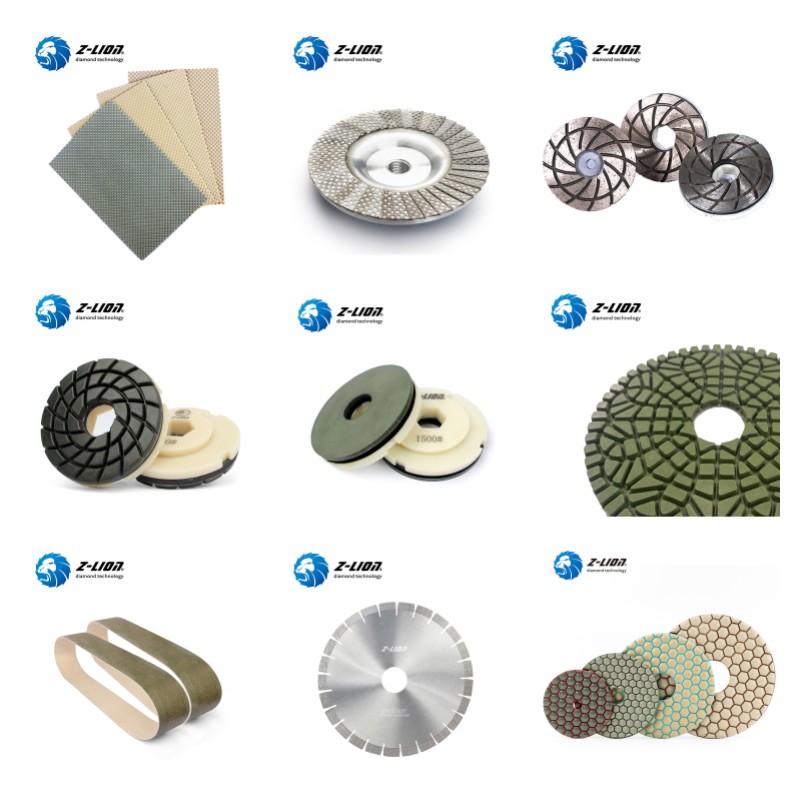
Common abrasive tools types and introduction

1. Sanding belt
An abrasive belt is a grinding tool made of annular-coated abrasives. It is often used in conjunction with a belt grinder, a machine that spins an abrasive belt at high speeds for various grinding and shaping tasks. Abrasive belts are effective at removing materials such as metal or wood by cutting or abrading them. It is often referred to as a "soft grinding wheel" because of its flexibility and ability to adapt to different surfaces.
2. Sanding disc
Sanding discs, also known as lapping discs or high-speed grinding discs, are round tools used to sand or grind surfaces. They are made by coating a disc-shaped substrate, usually made of high-strength steel paper or vulcanized fiber, with an abrasive material. The abrasive grains are then fixed to the substrate using a synthetic resin as a binder. These coated abrasives provide an effective method for material removal, smoothing, and polishing in a variety of applications.
3. Flap disc
It consists of a rectangular piece of abrasive cloth (usually paper) that is attached at one end to a central shaft or flange. The other end of the cloth is arranged in an overlapping fashion, forming multiple flaps. Whether you're working on wood, metal, or plastic, the flap disc is an all-in-one tool that can tackle virtually any surface. The lobes are arranged radially to create a more flexible and versatile grinding surface than conventional grinding wheels. The flap conforms to the shape of the workpiece, allowing for a smoother finish and reducing the risk of gouging. The center hub or shaft is used to attach the flap disc to a power tool, such as an angle grinder.
4. Sandpaper
Sandpaper, also known as water sandpaper or wet/dry sandpaper, is a general-purpose abrasive tool that is often used to smooth surfaces. As the name suggests, it can be used dry or soaked in water while sanding. Waterproof sandpaper is designed for wet applications and can withstand contact with water without deterioration. It is usually made of waterproof paper or treated waterproof paper as the base material. Abrasives such as corundum or silicon carbide firmly adhere to the paper substrate using an adhesive made of paint or resin. There are two main shapes of waterproof sandpaper: sheet or roll. Sheets are usually available in a variety of sizes and are convenient for hand sanding or attaching to a sanding block. As the name suggests, a roll is shaped like a roll and is often used with a power sander to obtain a greater surface area. Water sandpaper offers several advantages over traditional dry sandpaper. Using water during sanding helps reduce heat and prevents dust particles from accumulating, making the sanding process smoother and more efficient. It also prevents clogging, which prolongs the life of the sandpaper. Additionally, the water acts as a lubricant, reducing friction and creating a smoother surface on the workpiece. Waterproof sandpaper is commonly used in a variety of industries and applications, including woodworking, metalworking, automotive refinishing, and even for polishing gemstones and jewelry. The choice of abrasive size depends on the specific task and the degree of material removal or smoothing required. Lower grit sizes are used for heavier material removal, while higher grit sizes are used for finer finishing work.
5. Diamond saw blades
Diamond saw blades are specially designed for cutting and processing various types of stone. The main raw materials used in the manufacture of diamond saw blades include steel plates, alloy powders, and industrial diamonds as substrates. The steel plate provides the necessary strength and stability to the blade, allowing it to withstand the high rotational speeds and stresses of the cutting process. Alloy powders, usually made from a combination of metals such as cobalt, nickel, or bronze, are mixed with steel plates to enhance the hardness and durability of the blade. However, the key ingredient of diamond saw blades is industrial diamond. These diamonds are artificially produced and are usually small in size, usually ranging from a few microns to a few millimeters. They are embedded or bonded to the surface of the blade by metal or resin bonds. The hardness and strength of a diamond allow the blade to effectively cut through hard materials such as granite, marble, concrete, and other types of stone.
6. Diamond flexible polishing pad
These pads are general-purpose tools typically used for grinding and polishing hard and brittle materials such as granite, stone, ceramic, and glass. The pad itself is made of a soft and resilient material, usually with a resin adhesive. It is designed to attach to a Velcro cloth backing and can be easily attached to a handheld grinder or polisher. This allows it to be conveniently used in a variety of polishing and grinding applications. The abrasive material used in the pad is diamond. Diamond is very effective in grinding and polishing due to its excellent hardness and abrasive properties. It combines with a composite material to form a flexible pad that conforms to the contours of the workpiece for efficient, uniform polishing. In addition, diamond flexible polishing pads can also process shaped materials, which can easily adapt to different angles and contours. This makes it an invaluable tool for achieving polished surfaces with complex designs or irregular shapes.
-
Online service
-
Official wechat
account
-
QQ:40933769
-
E-mail:
sales@z-lion.com
Online service
Please feel free to give your inquiry in the form below. We will reply you in 24 hours.

